High Protein Oatmeal
February 27, 2024
Start your day off strong with this high-protein oatmeal, boosted with protein powder and your choice of add-ins like chia seeds or nut butter. This recipe is not only easy, it's also adaptable to your taste, whether you prefer chocolate, peanut butter, nuts, or fruits!
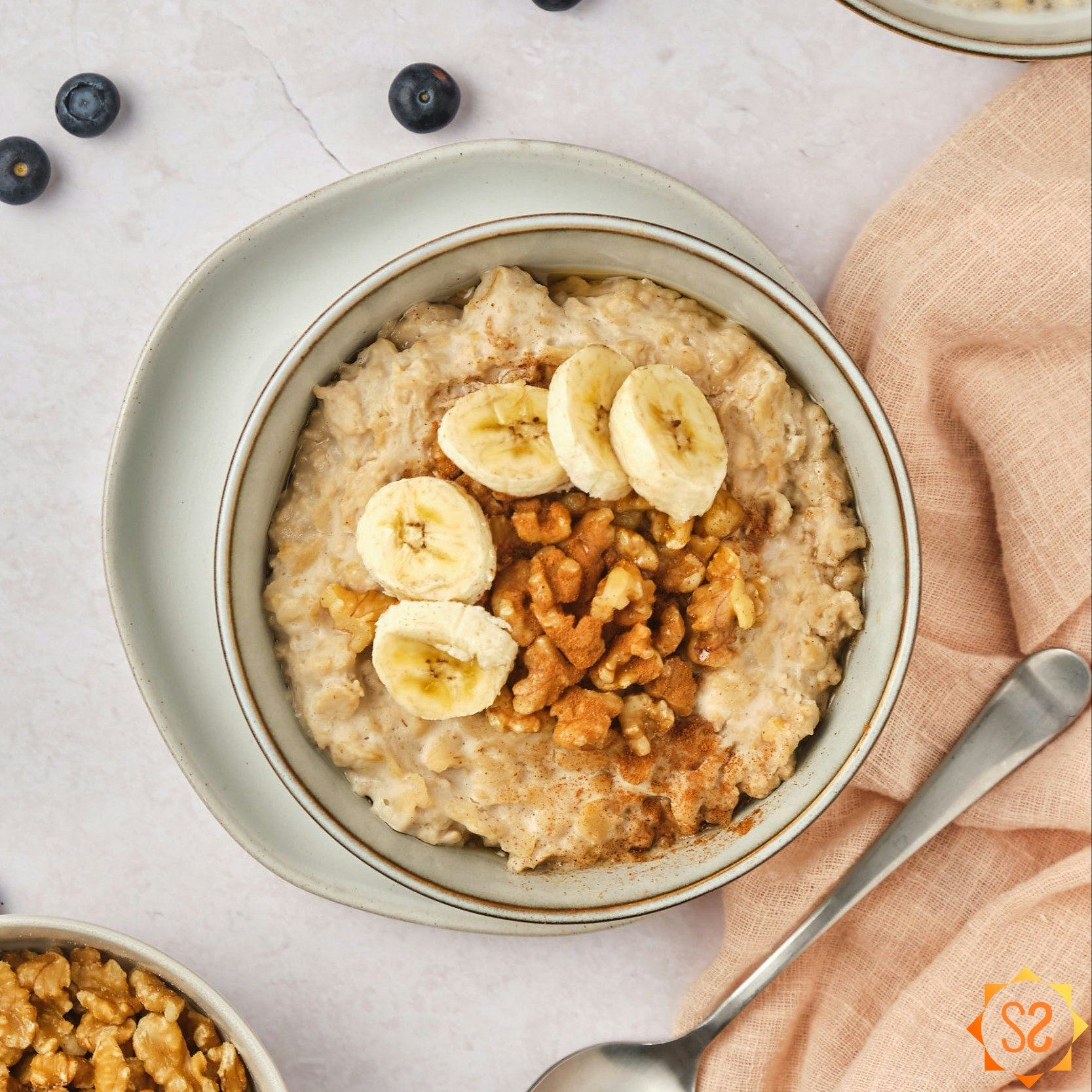
Adding protein powder to your oatmeal is a great way to start your day with a delicious high-protein vegan breakfast that leaves you feeling full and satisfied all morning. Better yet, it comes together in under 10 minutes for busy mornings.
A serving of oatmeal (50 grams, 1/2 cup dry oats) contains about 7 grams of protein, not including any milk you may add to it. But adding just 3 tablespoons of pea protein powder adds another 15 grams of protein, tripling the protein without adding any weird taste or texture.

Choosing a Plant-Based Protein Powder For Oatmeal
When you're choosing a protein powder, there are a few things you'll want to consider. Protein content is of course important, but the amino acid profile may be important to you as well. Some protein powders have a better flavor and texture than others, and some may have ingredients that you prefer to avoid or are allergic to.
Soy Protein: A great option due to its creamy texture and high protein content. Of the three options here, it has the most protein and it's also a complete protein. If you're not sure what "complete protein" means, check out my article on the different types of proteins and why vegans need to know about them. Soy is a common allergen, so if you're allergic or prefer to avoid soy, you will want to choose pea or hemp protein.
Pea Protein: Known for its neutral flavor and smooth texture, pea protein is an excellent choice for protein oatmeal. It blends well with oatmeal, adding a creamy consistency without overwhelming the flavor. It also has nearly as much protein as soy, but it's not a complete protein, as it's a little low in methionine. If you eat plenty of beans and legumes, this shouldn't be an issue for you, but if your diet is lacking in these foods, you may want to choose soy or hemp protein. I used Now Sports unflavored pea protein powder in this recipe with excellent results.
Hemp Protein: Has a nutty and earthy flavor, which blends nicely with the taste of oatmeal. It has a slightly gritty texture, however, which might be noticeable in your oatmeal. It has the lowest protein content of the three major types of plant-based protein, but it is a complete protein. So if you can't eat soy and still want a complete protein source, this is a good option for you.
Flavored and Unflavored Blends: Protein powder blends are all different, but usually contain a combination of two or more of the three protein powders mentioned above, and often some type of flavor. Take note of whether your protein powder contains any added sweeteners, as you may wish to reduce or eliminate the maple syrup from this recipe.
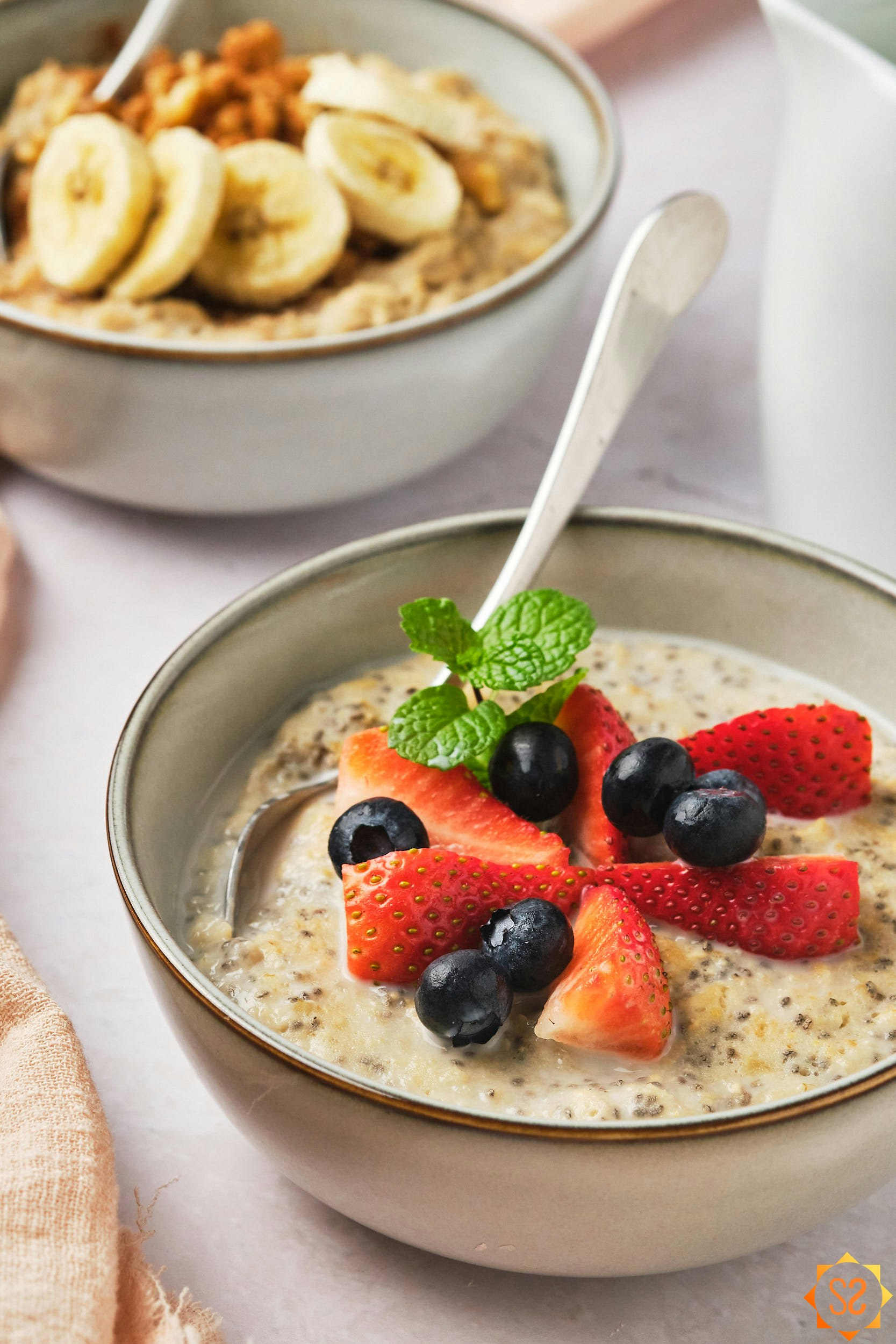
More Oatmeal Protein Boosters
While protein powder is the obvious way to get as much protein as possible into your oatmeal, you can only add so much before it starts to affect the taste. Fortunately, there are several other ways you can add protein if you need to!
Non-dairy milk: Different types of non-dairy milk vary widely in their protein content, with soy milk at the top of the pack. Using 1 1/4 cups of soy milk in this recipe contributes 11.4 grams of protein, which is even more than dairy milk.
Your next-best option for protein is cashew milk with 5 grams of protein, while oat milk and almond milk will contribute 2.5 grams and 2 grams each. Of course, brands will vary so be sure to check your labels!
Nuts and Seeds: There are lots of nuts and seeds you can stir into your oatmeal to increase the protein content as well. I'd start with adding 2 tablespoons per serving of oatmeal for balanced flavor.
Hemp seeds pack 6 grams of protein into just 2 tablespoons of seeds, and they have a nutty flavor that's not overpowering. Pumpkin seeds (pepitas) aren't far behind with 4.5 grams of protein. Other great options include (in order from most to least protein content): almonds, peanuts, chia seeds, sunflower seeds, cashews, and walnuts.
Note: If you want to add chia seeds to your oatmeal, be sure to increase the non-dairy milk to 1 3/4 cups, because the seeds will absorb quite a bit of liquid.
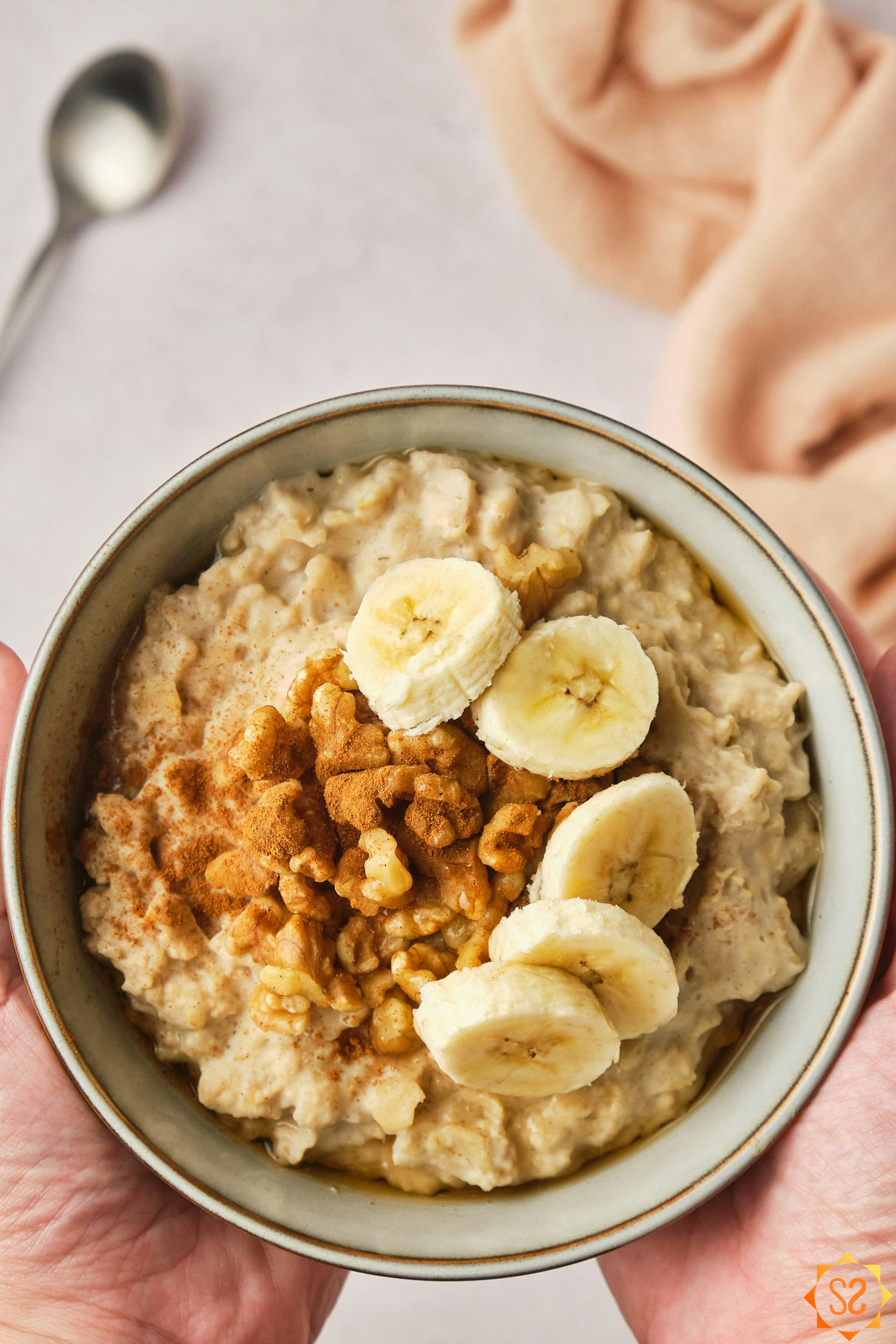
Nut and Seed Butters: To get the protein of the nuts and seeds, but with a smoother texture, stir in a creamy seed or nut butter after the oats have cooked. (Of course, no rule says you can't add both nuts and nut butter!)
Peanut butter is the most protein-dense of the major nut butters with 7.7 grams of protein in 2 tablespoons, and a flavor that almost everyone loves. Almond butter and sunflower seed butter are also popular choices, although with slightly less protein.
Topping and Flavor Options
Oatmeal is versatile, with so many flavor possibilities that you'll never get bored! Here are some options to please all kinds of taste buds:
Chocolate: After cooking, stir 1 tablespoon of cocoa powder into the oatmeal, and/or top with chocolate chips.
Fruits: You can add fruits before cooking, during cooking, or after cooking, depending on how soft or firm you'd like them to be. The most popular fruits to add to oatmeal are bananas, apples, strawberries, blueberries, raspberries, and blackberries.
Peanut butter: After cooking, stir in a couple of tablespoons of peanut butter, or add the peanut butter on top!
Brown sugar & cinnamon: Add 1/2 teaspoon ground cinnamon (this can be added before or after cooking), then swap the maple syrup for brown sugar.
Coconut: I like to stir coconut shreds into my oatmeal, or use them as a topping. You can also drizzle some canned coconut milk on top.
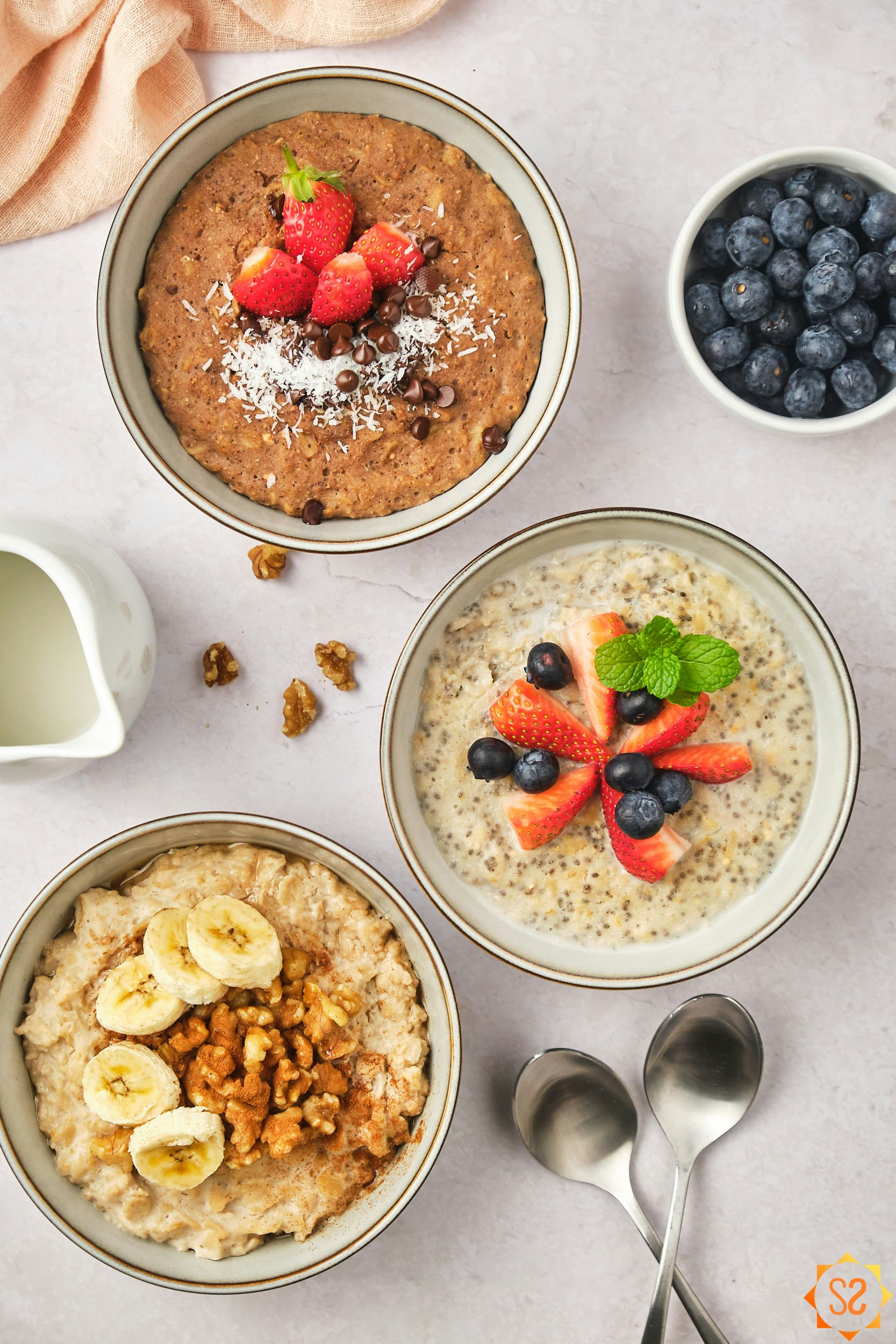
Flavor combination suggestions:
Banana nut: Stir some ground cinnamon into the oatmeal, then top with sliced bananas, walnuts and a drizzle of maple syrup.
Chocolate peanut butter: Stir peanut butter and cocoa powder into the oatmeal, then top with chocolate chips and more peanut butter.
Coconut Blueberry Pepita: Stir shredded coconut into the oatmeal, then top with more shredded coconut, blueberries, and pepitas (pumpkin seeds).
Chocolate strawberry coconut: Mix cocoa powder and coconut shreds into the oatmeal, then top with more coconut shreds, sliced strawberries, and chocolate chips.
Recipe Ingredients and Substitutions
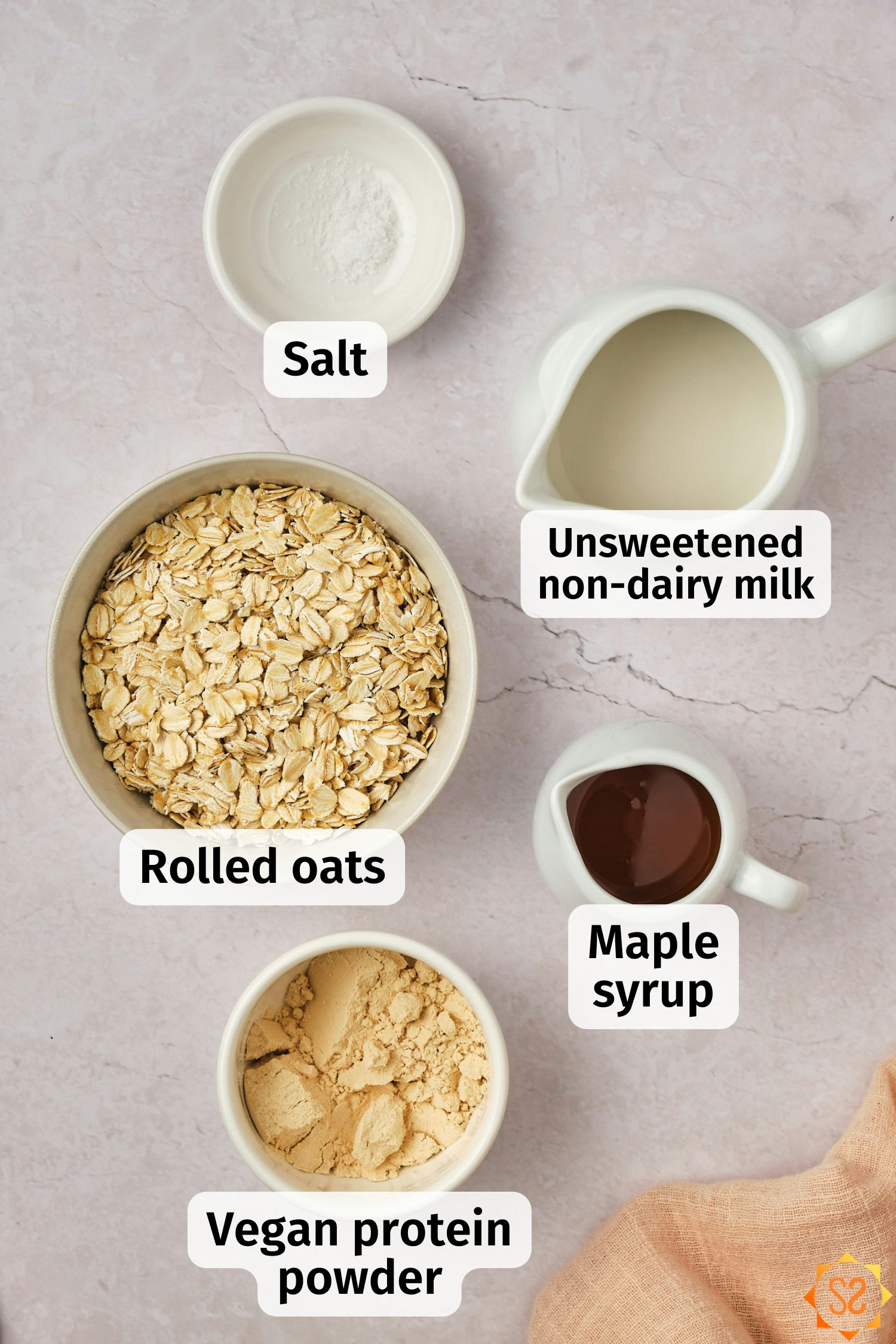
Rolled Oats: I like the texture of rolled oats best for classic oatmeal. Steel-cut oats will be tougher and quick-cook oats a bit mushier; you'll also need to adjust your cooking time if you're using one of these options.
Unsweetened Non-Dairy Milk: Any non-dairy milk works here, but soy milk has the most protein content. Other options include almond milk (my choice), cashew milk, and oat milk. See the section on Protein Boosters for more information on the protein content of different types of non-dairy milk.
Salt: Brings out the flavors of the oats as well as anything else you add in. You can omit it if you prefer.
Maple Syrup: sweetens the oatmeal and adds its own rich flavor, and also adds some moisture back into the oatmeal to keep it from becoming too dry from the protein powder. Other sweetener options include agave, sugar, brown sugar, stevia, or your favorite sweetener. Keep in mind if you're not using a liquid sweetener like agave or maple syrup, you may need to add some more non-dairy milk into the oatmeal.
Protein Powder: I used unflavored pea protein powder for this recipe with great results and no noticeable texture change. But you can also use soy protein, hemp protein, or a flavored or unflavored blend. If you opt for a blend with a sweetener, be sure to hold the maple syrup until you've tasted the oatmeal with the protein powder mixed in. For more information on choosing a protein powder, see the section called "Choosing a Plant-Based Protein Powder for Oatmeal."
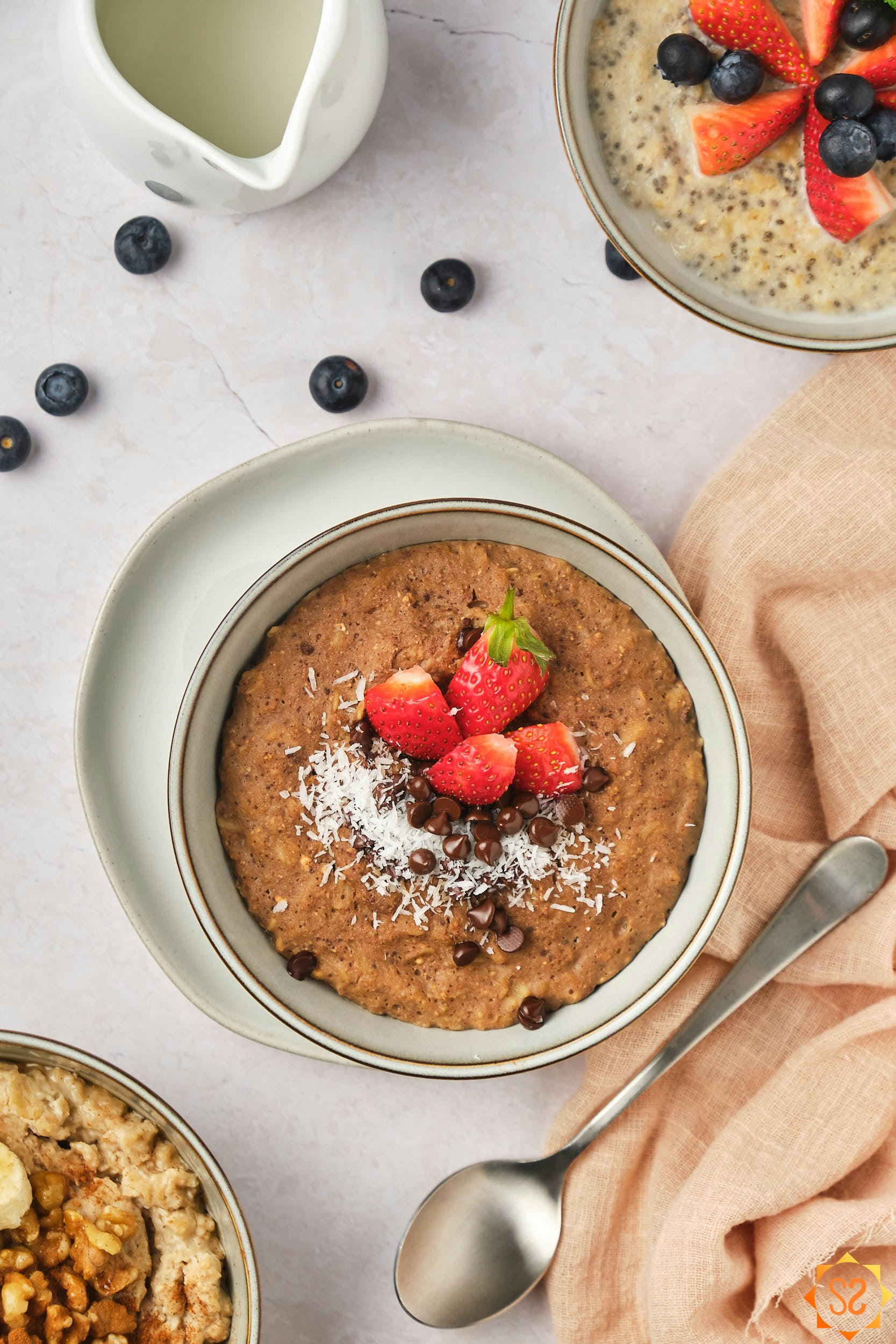
Frequently Asked Questions
Why is my protein powder turning clumpy in my oatmeal? First, make sure you're adding your protein powder after the oats are fully cooked; don't cook the protein powder together with the oats. If that's not the culprit, it may be that your specific type of protein powder is more prone to clumping. In this case, I recommend that you mix your protein powder with some non-dairy milk or water in a separate bowl first. Make sure it's fully dissolved with no clumps, then stir it into your cooked oatmeal.
Can I use another sweetener or leave the sweetener out? Any kind of sweetener will work in this recipe, including agave, cane sugar, brown sugar, coconut sugar, stevia, etc. However, if you're using a non-liquid sweetener or not using any sweetener, you may want to increase your non-dairy milk a bit to ensure your oatmeal isn't too dry.
Can I use quick oats or steel-cut oats instead? You can if you prefer, but you'll need to adjust cooking times depending on which type of oats you're using. But for the best taste and texture, I recommend rolled oats.
Can I use water instead of non-dairy milk? You can use water or a 50/50 blend of water and milk for protein oatmeal; but with non-dairy milk you'll get a better flavor and creamier texture. Plus, many types of non-dairy milk are a significant source of protein. (See the section above on Protein Boosters for more information on the protein content of different types of milk).
Can I make protein oatmeal in a microwave? Yes, mix your oats, non-dairy milk, and salt in a deep bowl (make sure it's big enough to prevent overflowing) and microwave on high for 1 minute. Stop, stir, and microwave for 1 minute more, or until you've reached the desired consistency. Then continue adding in your protein powder and other ingredients according to the recipe.
How can I store and reheat this protein oatmeal? If you have leftovers, you can store them in an airtight container in the refrigerator for 2-3 days. Storage time may vary depending on your add-ins and toppings. Reheat with additional non-dairy milk in a small saucepan over medium-low heat, stirring regularly until warmed through.
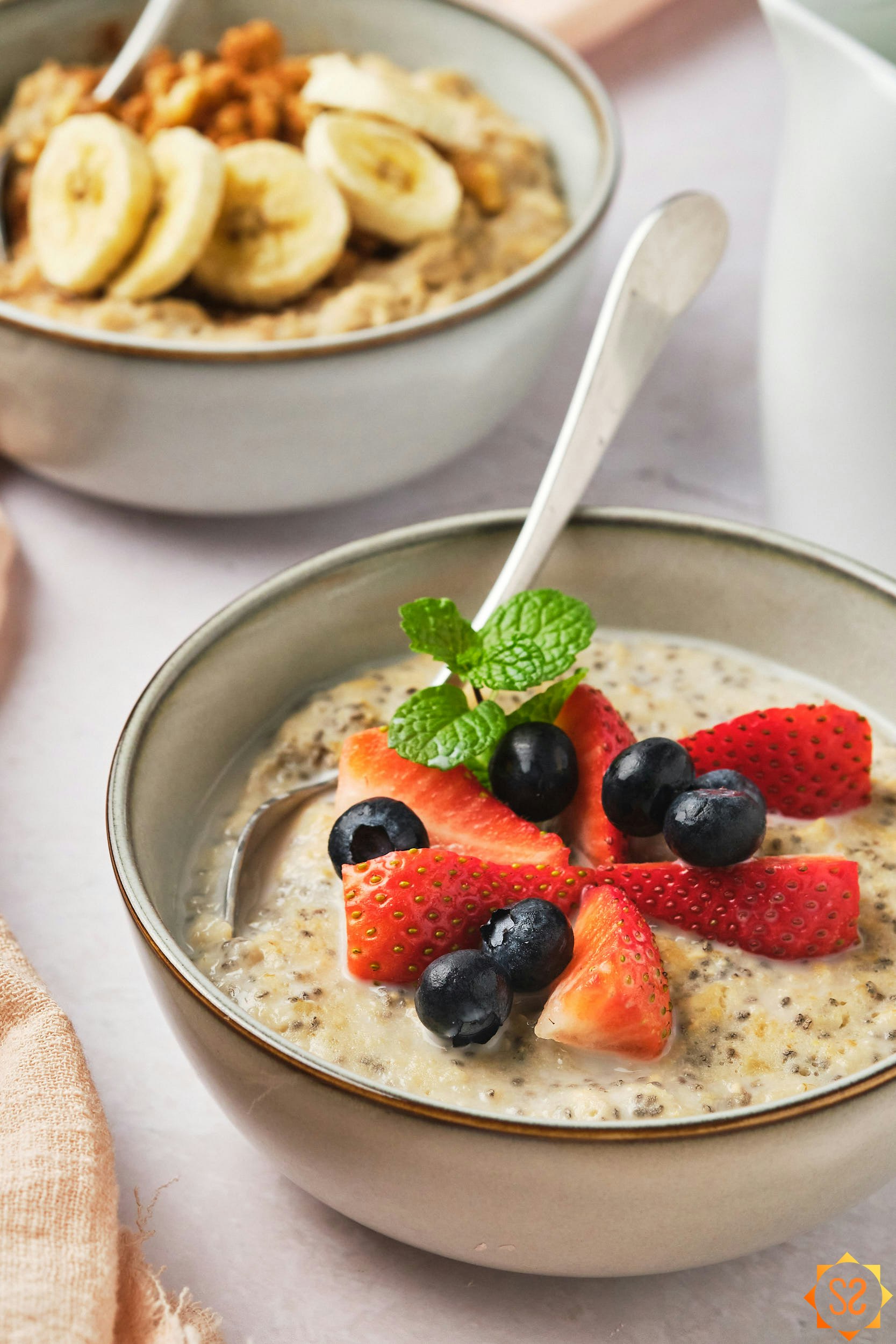
More Vegan Breakfast Ideas
High Protein Oatmeal
Yield1 serving
Prep Time3 minutes
Cook Time5 minutes
Total Time8 minutes
Ingredients
- 1/2 cup rolled oats
- 1 1/4 cup unsweetened non-dairy milk*
- 1/8 tsp. salt
- 3 tbsp. protein powder (I used unflavored pea protein)
- 2 tbsp. maple syrup
Optional Add-ins
- Fruit (i.e. berries, sliced bananas)
- 2 tbsp. chia seeds (see note)*
- 2 tbsp. nut or seed butter
- 1 tbsp. cacao or cocoa powder
- 1/2 tsp. ground cinnamon
Instructions
In a small saucepan, add your oats, milk, and salt, then stir to combine.
![Oats, milk, and salt stirred together in a medium saucepan.]()
Turn your heat to high and bring the milk to a boil, then reduce the heat to simmer for 3-5 minutes, until you’ve reached a consistency that’s a bit more watery than you’d like (keep in mind it will get thicker after you add the protein powder).
![Milk, salt, and oats after cooking.]()
Add in protein powder, maple syrup, and any other add-ins you’d like, and stir well. Top with your choice of toppings (such as fruit, nuts, nut or seed butter) and enjoy!
![Protein powder and maple syrup added to cooked oats before stirring (left) and after stirring (right).]()
Notes & Hints
You can use water or a mix of half water, half milk instead of milk; but I recommend using milk for the best texture and flavor.
Chia seeds absorb a lot of liquid, so I recommend increasing your milk to 1 3/4 cups (420 mL) if you want to include 2 tbsp. of chia seeds.
Be sure to wait until after the oats are cooked to add your protein powder, otherwise it may become gooey or clumpy.
Different types of protein powders may behave differently; if you're getting clumps when adding it directly, try mixing the powder with water or milk before mixing it into the oatmeal.
The protein content for this recipe is calculated using rolled oats, almond milk, pea protein powder, and 2 tbsp. peanut butter. Your protein content may be more or less depending on the options you choose.
Nutrition Data
Serving Size: 1 recipe; Calories: 590; Fat: 25 g.; Saturated Fat: 4 g.; Cholesterol: 0 mg.; Sodium: 813 mg.; Carbohydrates: 64 g.; Fiber: 7 g.; Sugar: 26 g.; Protein: 31 g.; Vitamin A: 113 mcg. RAE; Vitamin B12: 1 mcg.; Vitamin C: 0 mg.; Vitamin D: 6 mcg.; Calcium: 89 mg.; Iron: 7 mg.; Potassium: 320 mg.; Zinc: 0 mg.Note: This data should be used only as an estimate. Please see the nutrition section of my terms and conditions for more information on how this data is calculated.
Vegan recipes in your inbox
Join the community and get my newest and best yummy vegan recipes sent right to your email!

Share this:




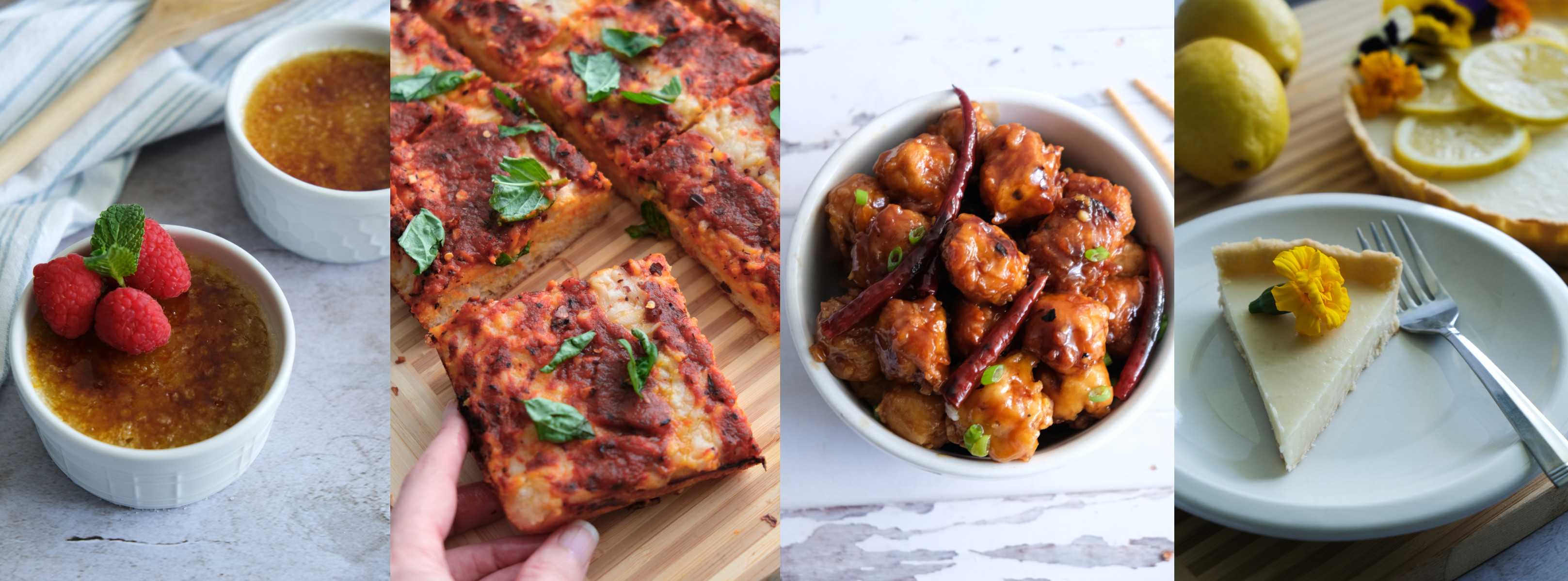
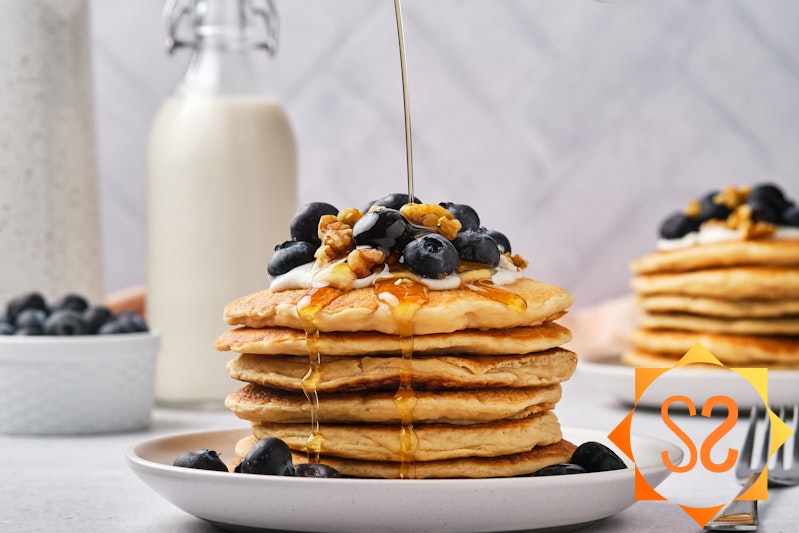


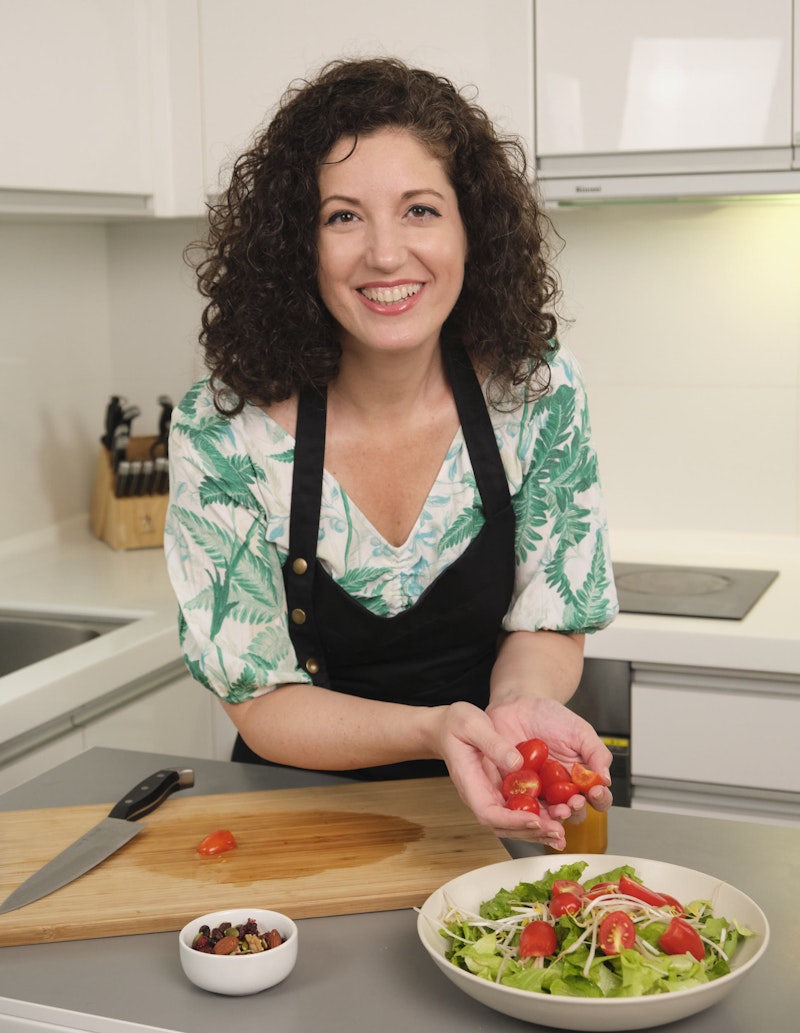


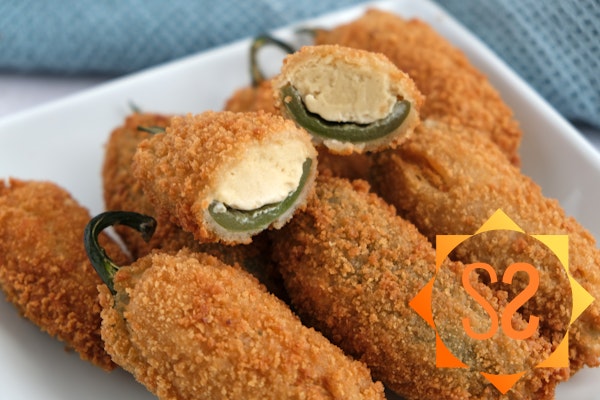


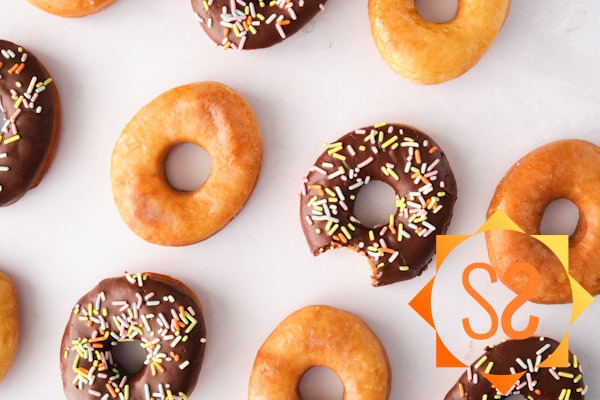
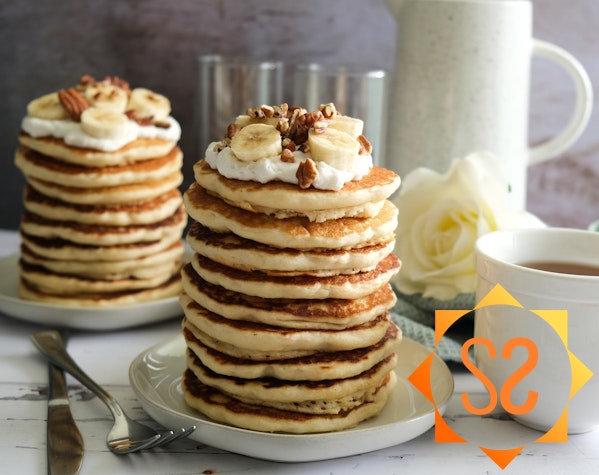
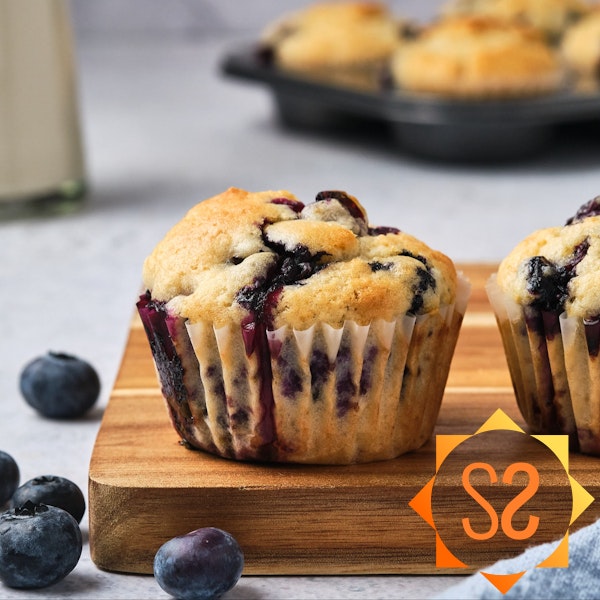
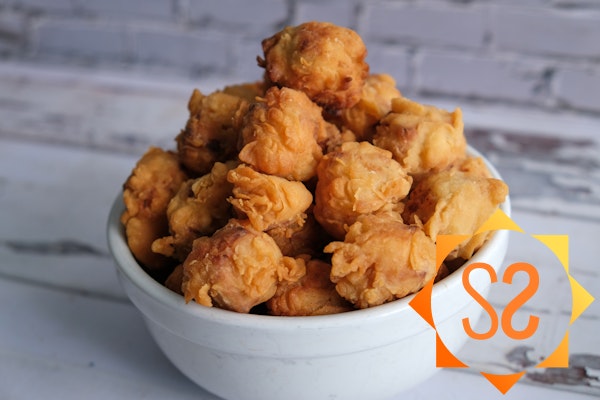

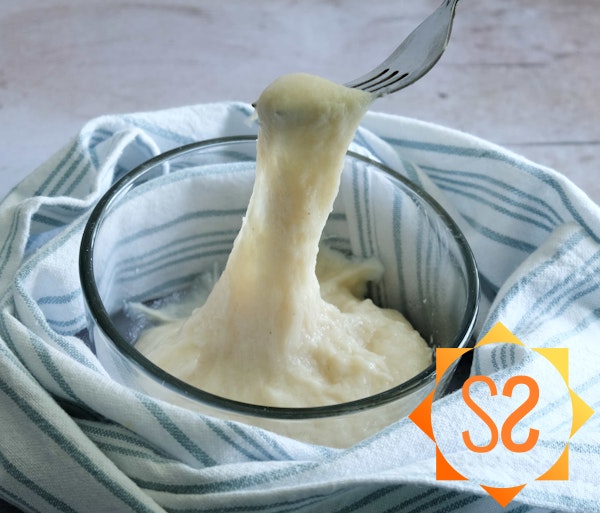

Leave a Comment
I love reading comments! I'll do my best to answer questions, too. If you made the recipe, please leave a star rating, it helps support the blog so I can make more recipes and articles. Thank you!
says